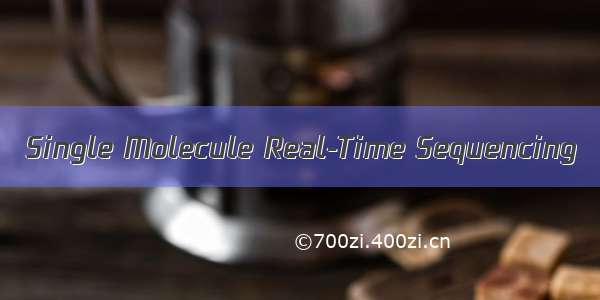
Single Molecule Real-Time Sequencing
Published July 9,
Recently, I have witnessed the uprising of various next generation sequencing (NGS) platforms and it’s quite interesting because each platform uses a different method. Previously, I’ve written about the exciting possibility ofnanopore sequencing—a new sequencing technology based on the “signature” electrical currents generated as a single strand of DNA passes through the nanopore. The advantage of the nanopore sequencing technology is that you obtain real-time sequencing results.
Today, I’m going to talk about a different NGS platform that also allows real-time sequencing, but it uses a different principle. Sounds pretty cool right? Pacific Biosciences (PACBIO) is behind this single molecule real-time (SMRT) sequencing and I would like to share some thoughts with you about this technology.
What’s So “SMRT” About Single Molecule Real-Time Sequencing?
That’s a great question! Well, it does churn out sequences in real-time, just like nanopore sequencing. However, the “SMRT” technology does this in a slightly different way.
First of all, it is a “sequencing by synthesis” type of reaction, which incorporates nucleotides (A,C,T,G) that are conjugated with different colors. Wait…now it sounds like the Sanger sequencing reaction. However, in Sanger sequencing the dideoxynucleotides actually terminate elongation of the nucleotide chain. This doesn’t happen with the SMRT technology.
The cool thing about this technology is that inside each SMRT flow cell, there are thousands of tiny pores called zero-mode waveguides (ZMWs). Each ZMW represents one reaction chamber and at the bottom of the chamber sits (immobilized) the DNA polymerase machinery. The pore size (~70nm in diameter, 100nm in depth) is too small for light to pass through easily, thus creating an illuminated observation volume that is small enough to observe only a single nucleotide being incorporated and each base is added. In addition, the fluorescent tags are cleaved-off after the incorporation of the nucleotide. So each time a different nucleotide gets incorporated into the parental template, a different color can be detected. Therefore the SMRT technology and the machine work like a giant microscope that can literally “see” DNA synthesis in real time! In addition, thousands of reactions in each ZMW can be detected simultaneously.
The only small catch is that the template DNA needs to prepped into a dumbbell-structured entity using SMRTBell technology. The structure is closed and circular and ensures continuous read over long periods. But don’t you worry! There are a number of sample and template preparation kits that you can purchase at PACBIO to speed things up.
2ndGen NGS v.s. 3rdGen NGS
So by now you are probably wondering how the PACBIO SMRT technology compares with the Illumina NGS technology? Although both are “sequencing-by-synthesis” platforms, one major advantage of the SMRT technology is real-time acquisition of signal, meaning that there is no lag between each nucleotide addition. This means that the SMRT machine must be equipped with super sensitive and high-speed cameras/sensors to capture the change in colors, given that the DNA polymerases are capable of zipping-through the template at approximately 1000bp/sec! Talk about a speedy Ferrari on the molecular highway. And that’s why the PACBIO SMRT platform is considered to be the more advanced generation (3rd) in the current NGS platform.
So what other advantages are there?
Well, the length of the sequencing reaction read has been extended dramatically. Compared to the typical read of 200-300bp using the Illumina platform, the technology by PACBIO can reach, on average, 20kb in length depending on the nucleotide chemistry and the machine. This is a big improvement because it will let scientists decipher difficult regions that contain multiple repeats and also provide a great genome construct map.
In addition, another cool feature is that the SMRT system can differentiate certain common DNA modifications, such asmethylation, based on the kinetic variation generated from the light-pulse. This is wicked smart!
Disadvantages
The PACBIO SMRT system seems awesome, but it’s not without some drawbacks. One of the major problems is that the flow cell is not as high throughput when compared to the Illumina platform. The problem is that not all of the ZMWs will carry out successful sequencing reactions. Some of the wells simply do not have the DNA template. Therefore, it’s a tussle between two giants. PACBIO has long reads but less flow cell success, while Illumina has short reads but better throughput.
Another problem is that the sequencing error rate produced using PACBIO SMRT is still high compared to the Illumina platform. I believe that this can be improved over time, but right now you need at least 15 passes (15 times passage over) to generate 99% accurate data. Therefore, this would affect time and cost in a big way.
Conclusion
So what do you do with these two technologies? One offers accuracy but short read lengths, while the other one offers long reads, but is less accurate. How about combining them? That’s right, scientists have triedhybrid sequencingmethods by combining the two platforms and it can sometimes bring the better of the two worlds. On one hand, you can use PacBio platform to get a fast and long readout of the genome map. Then you can use the Illumina sequencing to confirm and tease out the genetic details!
I can’t wait till the day that this SMRT technology becomes even smarter!
















